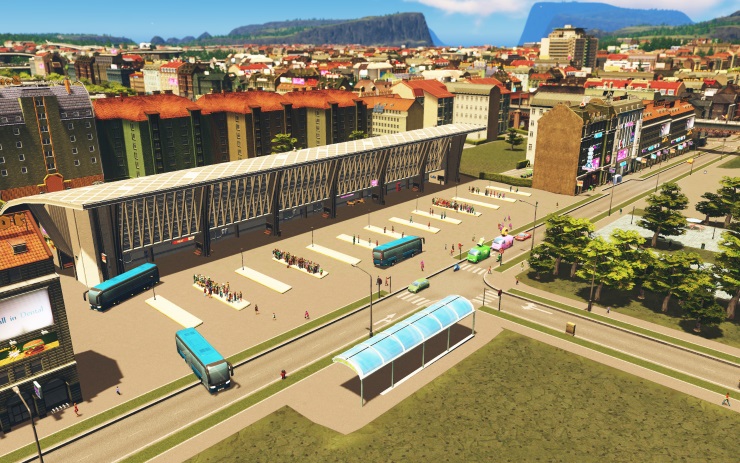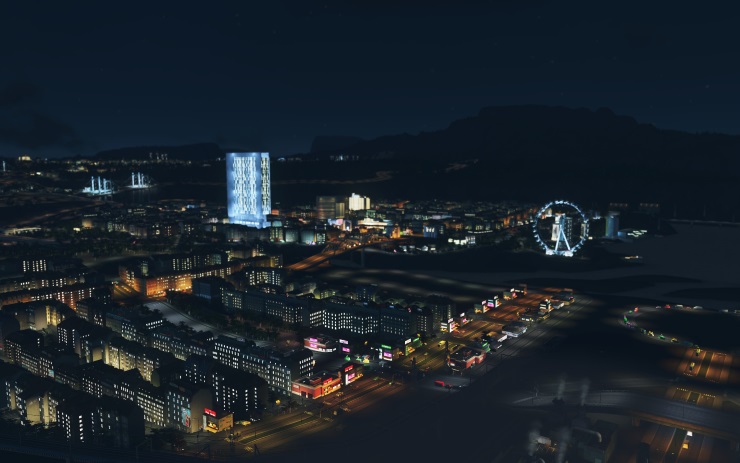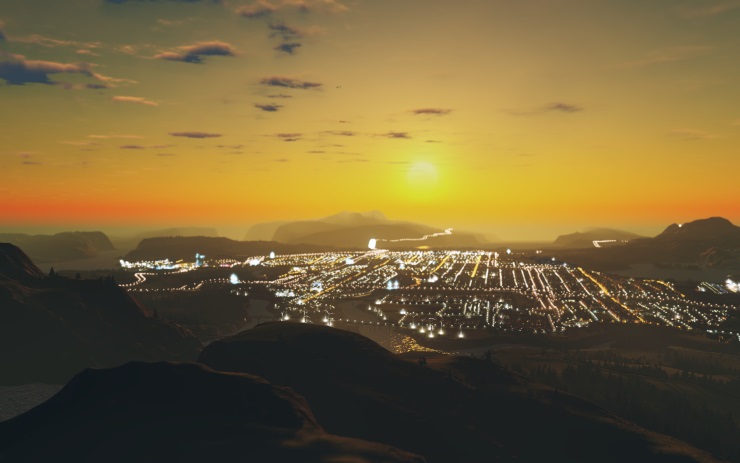September 24, 2015.
If you’ve played Cities: Skylines before, then you’ll be aware of the dominance that daylight has over darkness. Your city will be bustling with life during the day, but as soon as that sun goes down, you can bet that there won’t be much happening until the next morning. Cities: Skylines – After Dark tries to change this fact, by transforming your sunlight cities into hubs of activity throughout the nighttime as well, with varying degrees of success.
The most obvious thing you’ll notice with Cities: Skylines is the day/night feature. No longer will your cities be trapped eternally at noon, but time will flow naturally and darkness will fall, adding a whole new sense of realism to the game. At night, traffic is lessened, electricity consumption is increased and your citizens transition into their nocturnal routine. You’re also given the power to increase and decrease the budget of certain utilities depending on time of day: increasing the budget of garbage pick-up at night means more trucks will be dispatched at this time, and will most likely have an easier time getting the job done. You can also specialise your public transport system so that industrial-orientated routes are only active during the day, while routes that go directly into commercial zones are more flexible during the night. All of these features add an incredible amount of depth to the game, and provide you as mayor with a lot more power than you once had.

Also new is the ability to specialise commercial districts for leisure. This makes them more active during night-time and quieter during the day, as they are usually filled with things such as fast food restaurants, cinemas, gyms and so on. On the downside, they do become more prone to crime so it’s probably wise to add a couple of extra police stations nearby to get on top of it should it become an issue.
Speaking of crime, After Dark builds upon the jail system of the base game. Criminals must now go to prison in order to be rehabilitated, instead of just being carted down to the nearest police station. Once their sentence is served, they won’t commit a crime again: a little convenient perhaps, but a feature that is graciously accepted.

While the majority of the new features provide some sort of improvement, either minimal or massive, After Dark still feels a bit empty. I don’t say that without some disappointment either, as I found Cities: Skylines to be the best city-builder available to date. Although it does create a few entirely new opportunities in-game, After Dark could have gone even further with the whole nocturnal theme. For £10.99, perhaps it’s worth it purely for the extra control you’re provided, but the biggest selling point, the day and night cycle, is actually part of a free update. So there’s that.
Although not revolutionary, After Dark still brings to the table some great new features to make you the Mayor of Nightlife. While it generally enhances the realism of the base game, I can’t help but feel it could have pushed the boundaries a bit further and included more. Regardless, what it does provide is enough for me to tell you it’s a worthwhile investment if you’re a fan of the main game.
Day/night cycle is fantastic.
Plenty of extra control.
12 more hours of in-game time to play with.
Feels a bit empty.
Doesn’t push the new features far enough.
Not exactly revolutionary.
Although not revolutionary, After Dark still brings some great new features to the table.



